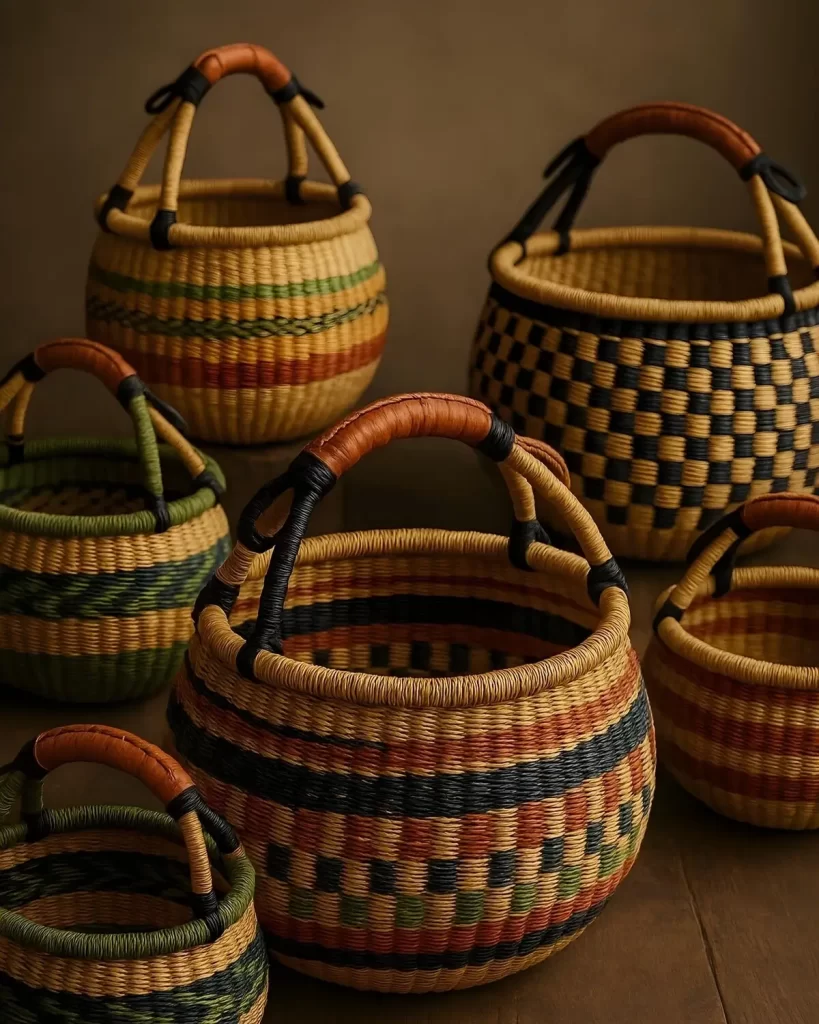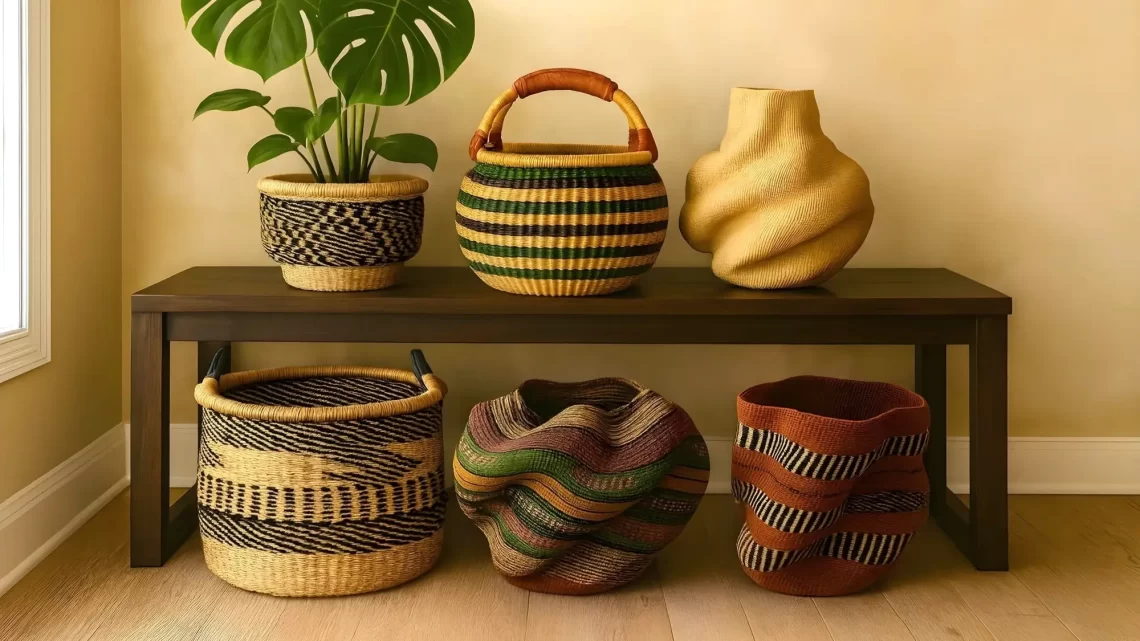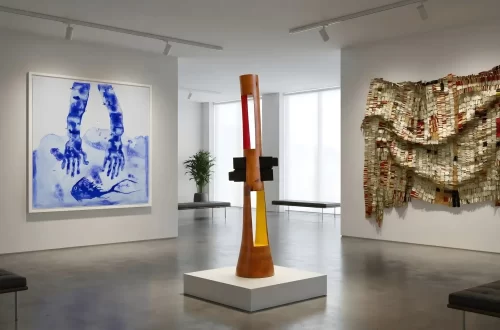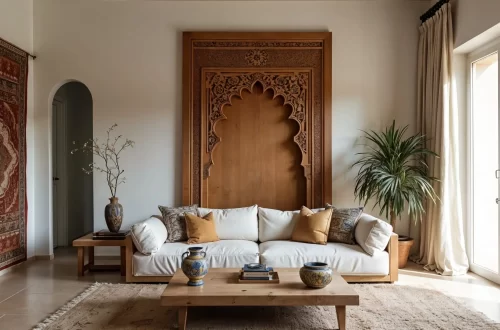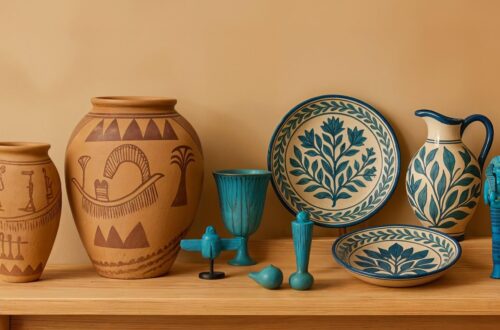Growing up in Senegal, I thought I knew weaving. Our region has created functional baskets for centuries, pieces that carry market goods and store household essentials. Beautiful, practical, deeply rooted in daily life. Then I discovered Bolga baskets, and suddenly I understood I’d only seen half the story.
These handwoven beauties from Northern Ghana do something I didn’t think possible. They take ancient techniques and push them into territory I never thought existed. Some are storage solutions that happen to be gorgeous. Others are pure art that belongs on pedestals.
Let me take you through everything worth knowing about these remarkable pieces.
Jump to:
- What Makes Bolga Baskets Special
- How Artisans Create Bolga Baskets
- Traditional Bolga Baskets and Their Origins
- Modern Bolga Baskets for Storage
- Art Baskets That Defy Belief
- Styling Bolga Baskets in Your Home
- Beyond Baskets: Other Bolga Creations
What Makes Bolga Baskets Special
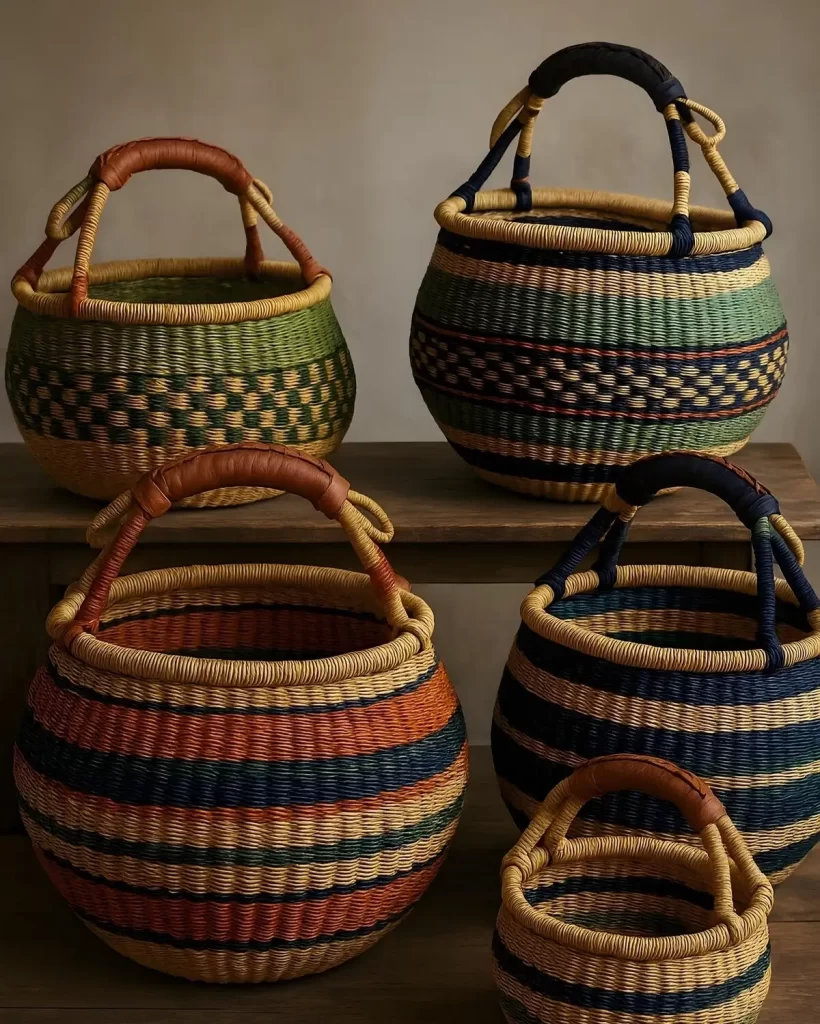
Bolga baskets come from Bolgatanga, a village in Northern Ghana where weaving runs in families. Mothers teach daughters, fathers teach sons, and the knowledge flows across generations like water finding its path. The local name “Ghana Baskets” barely captures what these weavers accomplish.
It starts with elephant grass, also called veta vera grass. This material grows wild across Ghana’s tropical regions, reaching impressive heights and developing a strength that surprises first-time handlers. Weavers also work with straw, bamboo, and leather depending on the design.
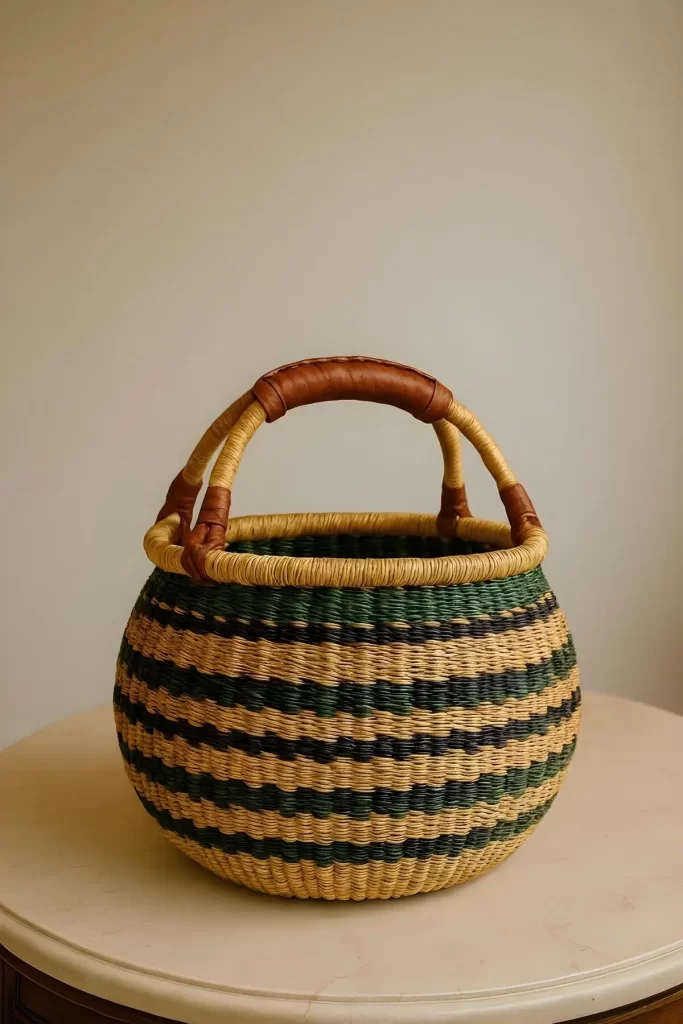
Here’s what sets them apart:
- Sustainable by nature — Elephant grass regrows quickly and needs no chemicals or irrigation
- Hand-dyed in vibrant shades — Browns, reds, oranges, greens, blacks all come from natural plant sources
- Built to last decades — The tight weaving and quality materials mean these pieces outlive their owners
- Completely biodegradable — Unlike plastic alternatives, they return to earth without leaving a trace
These Bolga baskets prove that sustainable choices don’t mean sacrificing beauty or durability. Meanwhile, mass-produced plastic baskets pile up in landfills for generations.
How Artisans Create Bolga Baskets
Understanding the process changes how you see the finished piece. This isn’t factory work or machine assembly. Every basket represents days of careful, deliberate handwork.
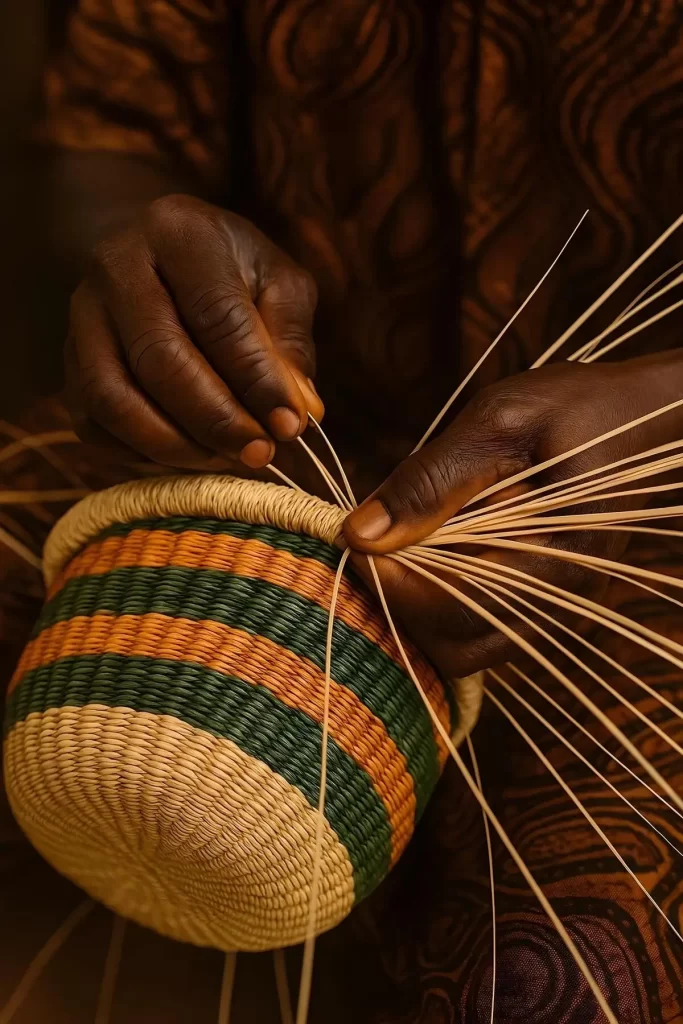
Preparing the Grass
First, weavers split elephant grass straws by hand into uniform widths. They twist each straw on their lap, creating that signature wavy texture. This step prevents breakage during the intense weaving process.
Natural Dyeing Techniques
Colors come from the land. Weavers extract dyes from fruits, leaves, bark, and roots found around Bolgatanga. The grass soaks until it absorbs the color fully and evenly.
The Weaving Process
Weavers coil and stitch the prepared straws using a continuous spiral pattern. Their hands move with practiced rhythm, building the basket from the center outward. Each basket takes several days to complete, some even up to a week.
Traditional Bolga Baskets and Their Origins
The original Bolga baskets served Ghana’s farming communities for practical tasks. Villagers stored grains like maize and millet in them, or used them to sift and separate grains from husks. These early versions had a rounded form and no handles.
As trade expanded beyond Bolgatanga, weavers adapted their designs. Handles appeared, making the baskets easier to carry to market or through fields. Soon these handled versions became the standard for shopping and daily storage throughout the region.
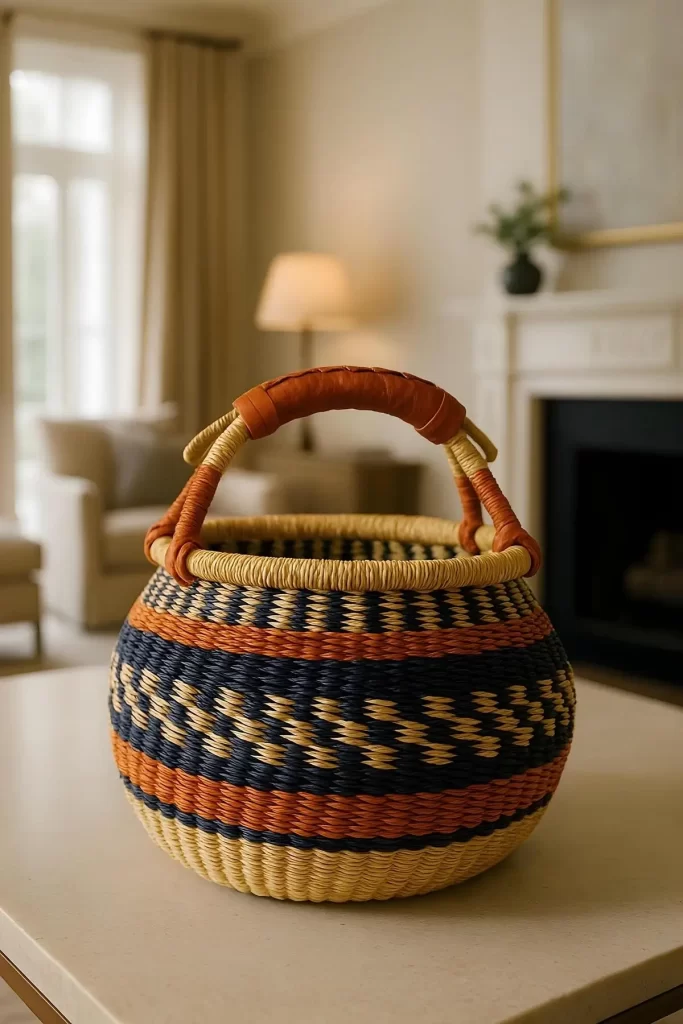
This evolution mirrors what happened across West Africa. Practical needs drive innovation, and craftspeople respond with solutions that work beautifully. The handled round basket with its sturdy construction became iconic.
Modern Bolga Baskets for Storage
Today’s storage-focused Bolga baskets build on that traditional foundation while meeting contemporary needs. They combine ancient techniques with shapes that fit modern homes perfectly.
Cylindrical Storage Baskets
Large cylindrical versions with leather handles hold everything you need to tuck away. Bed linens, kids’ toys, throw blankets, magazines. The tight weave keeps contents secure while the natural materials let everything breathe.
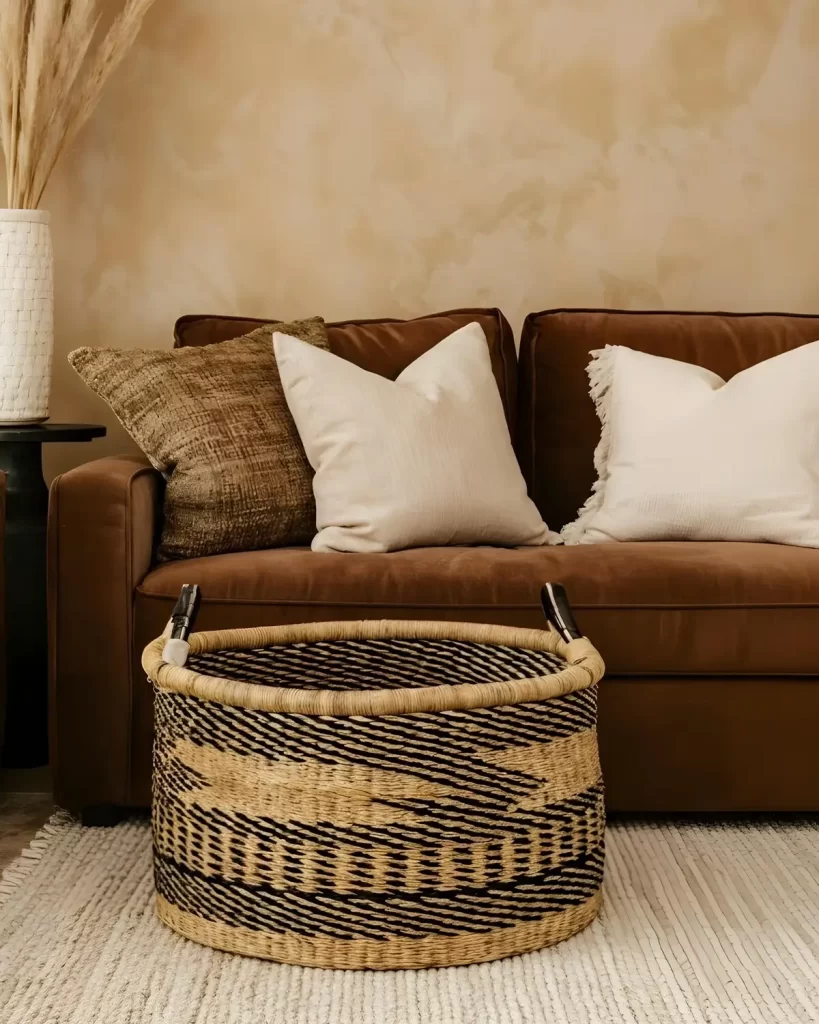
Laundry Hampers
Tall, spacious Bolga baskets transform the mundane task of collecting dirty clothes. These might be the most stylish laundry solution available anywhere. They’re certainly more appealing than plastic hampers or wire frames.
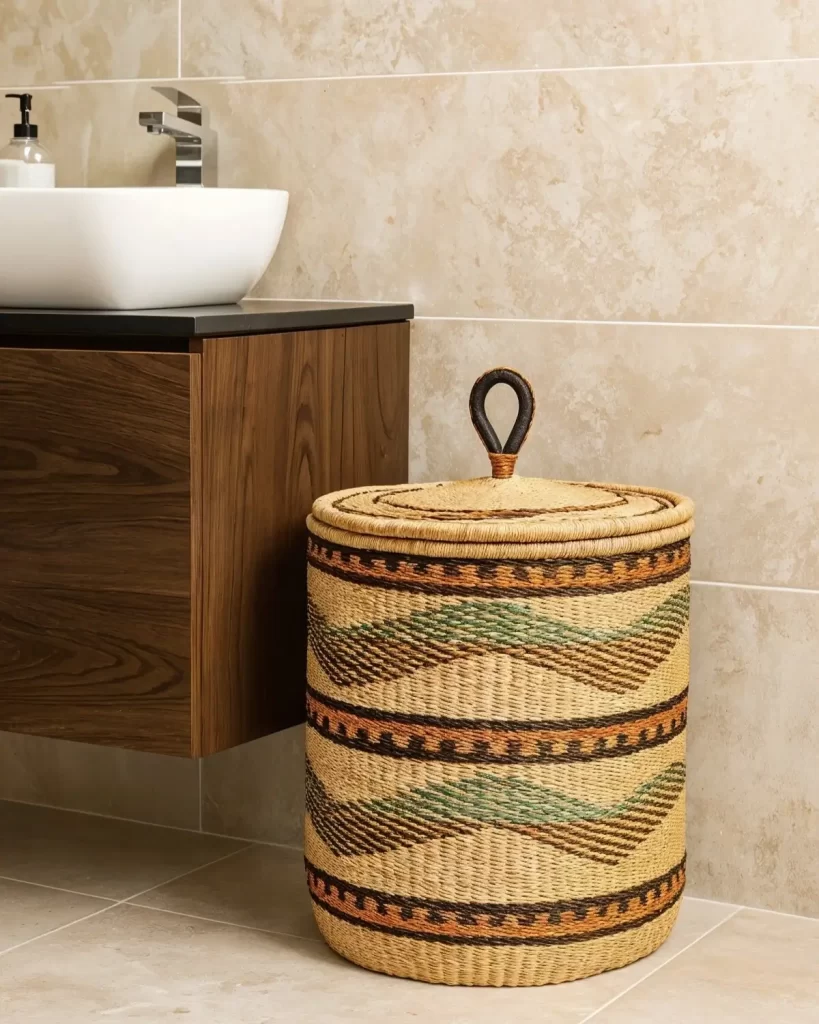
Drum Planters
The unique drum shape creates unexpected planters for indoor greenery. Imagine a fiddle leaf fig or monstera rising from a hand-dyed Bolga basket. The combination of living plants and natural fibers brings double the organic beauty.
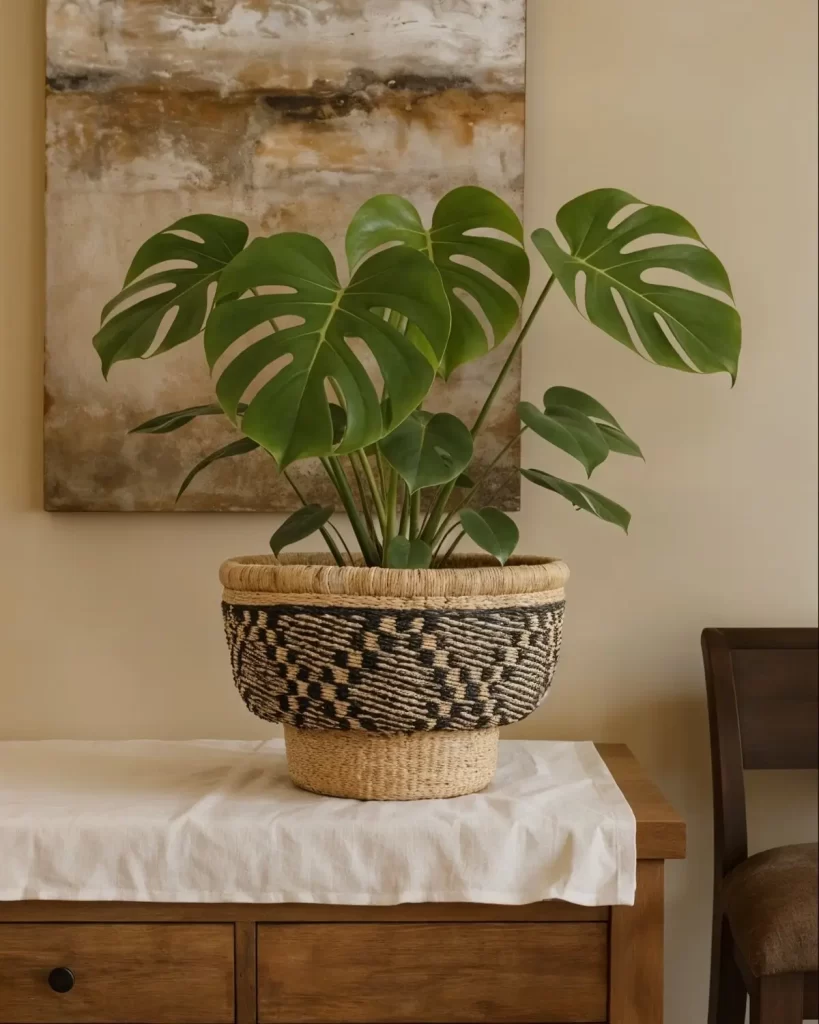
These functional pieces work hard while looking phenomenal. They solve real problems in your home but never compromise on aesthetics.
You May Also Like: 45 Vibrant African Baskets to Quickly Beautify Any Room
Art Baskets That Defy Belief
Now we reach the pieces that stopped me cold.
I’ve seen great weaving my entire life. Beautiful, intricate, impressive work. Then I encountered these art baskets from Ghana, and my understanding of what’s possible completely shifted.
Pakurigo Wave Designs
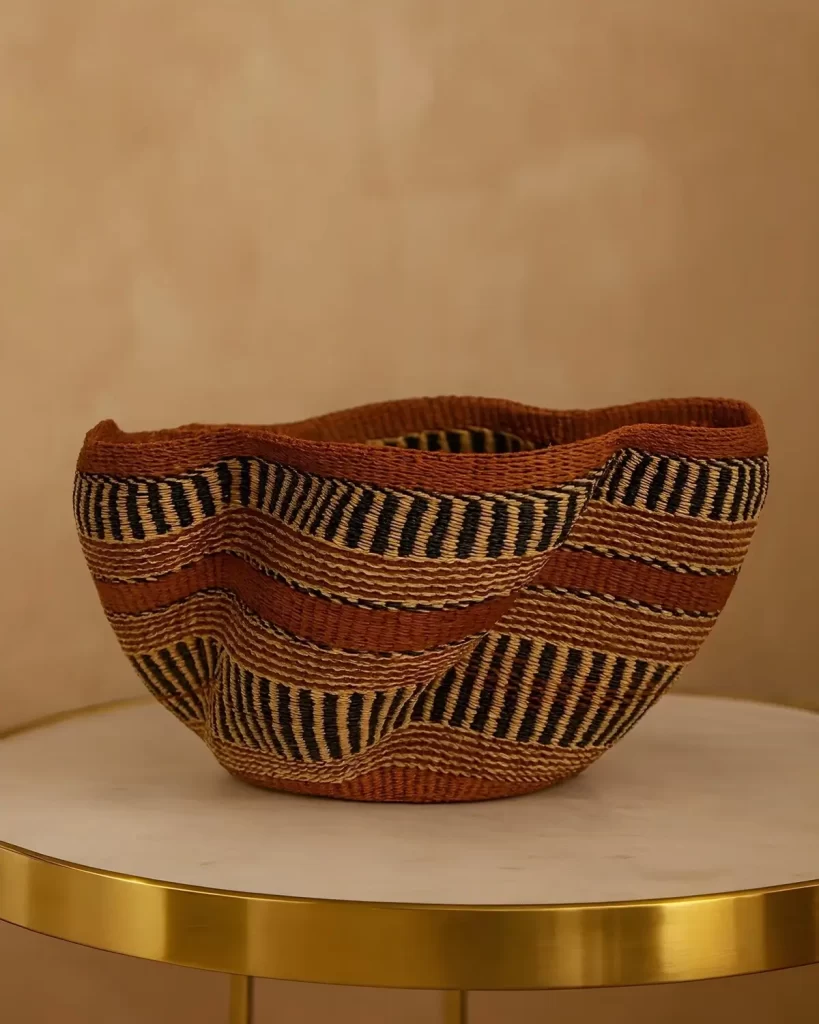
These designs feature undulating patterns that seem to move as you walk past them. The waves flow around the basket’s form with mathematical precision, yet they’re made entirely by hand. No machines, no templates, just skills and decades of knowledge.
Ayeratukko Shapes
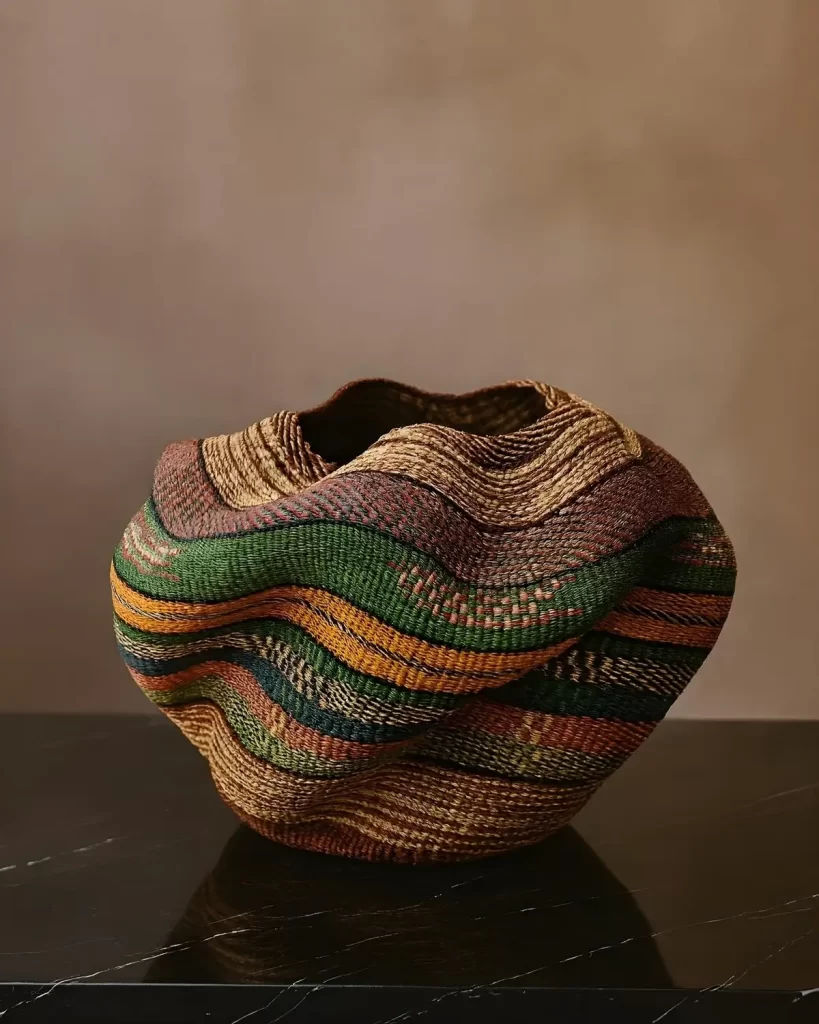
The Ayeratukko style brings a dreamy quality through its distinctive silhouette and pattern work. These baskets blur the line between functional object and sculpture. Place one on a shelf and watch it transform the entire space.
Yoomelingah and Pue-Oh Masterpieces
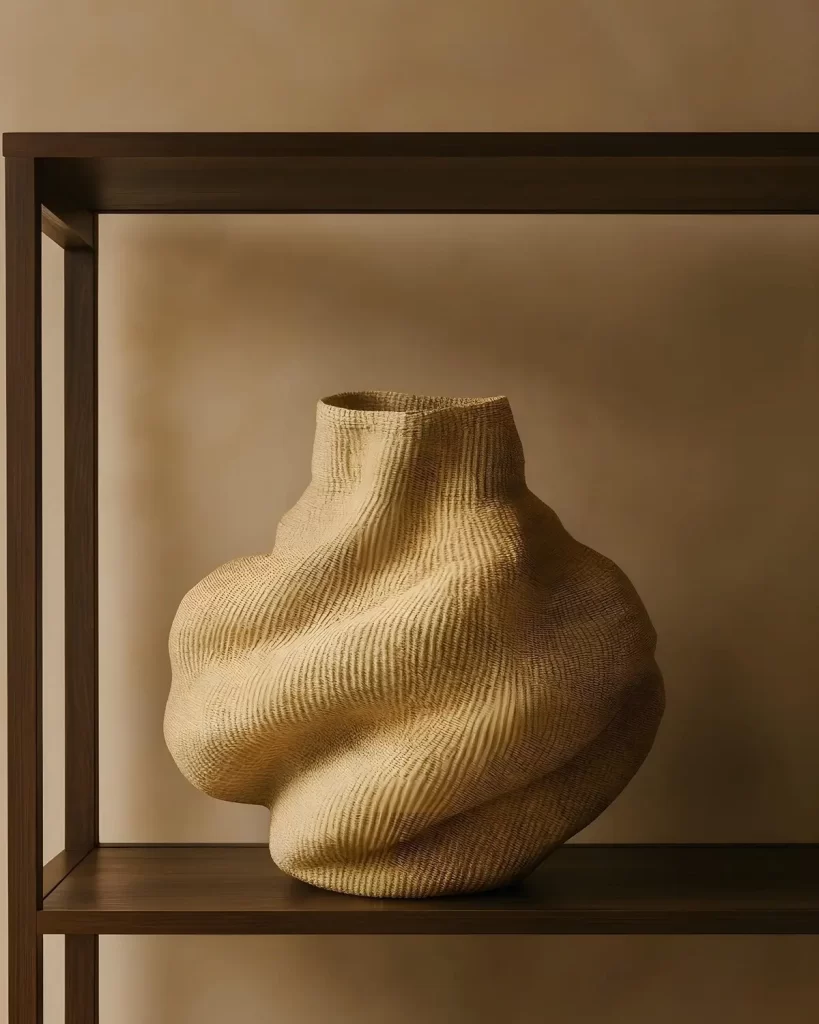
To me, Yoomelingah and Pue-Oh baskets represent the absolute pinnacle of Bolga artistry. Jaw-dropping doesn’t quite cover it. Complex shapes, perfect waves, and oversized pieces.
I genuinely have no idea how human hands create these. The level of skill, the hours invested, the artistic vision required. They are the most beautiful woven items I’ve ever seen, and I grew up surrounded by West African basketry.
Styling Bolga Baskets in Your Home
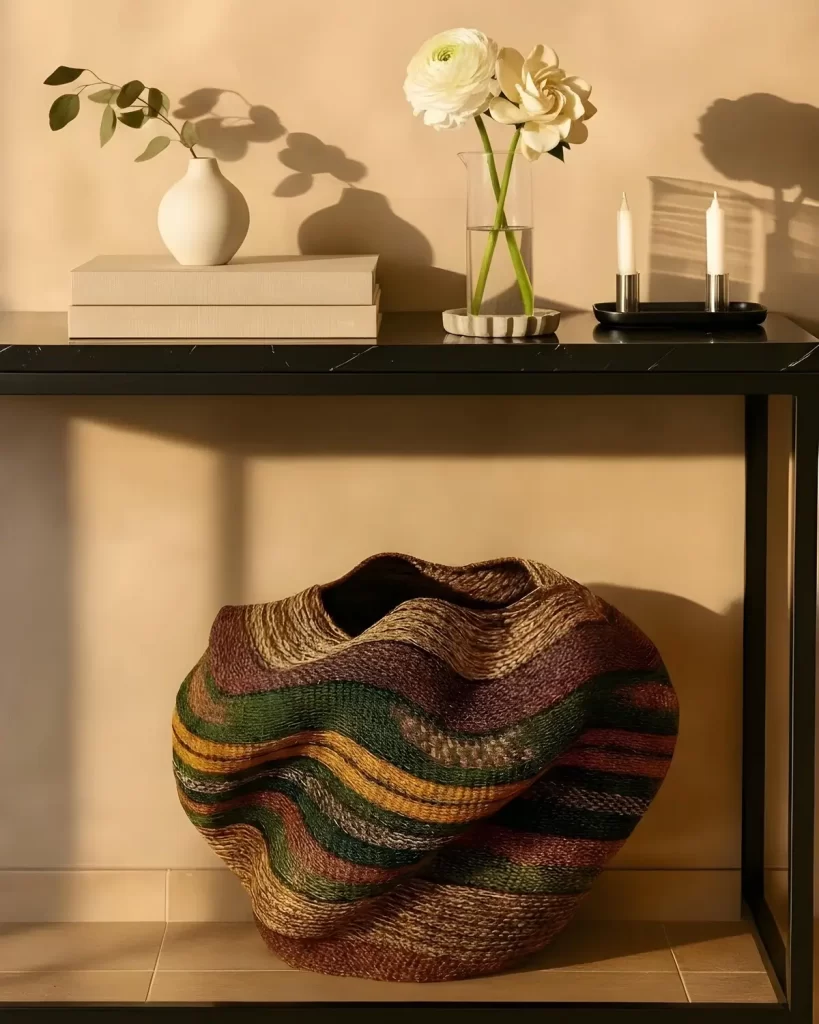
Art baskets deserve thoughtful placement.
- Under a console table, they add texture and interest at eye level when you’re seated.
- On open shelving, they break up rows of books and create visual anchors.
- In a room’s corner, they command attention like sculpture.
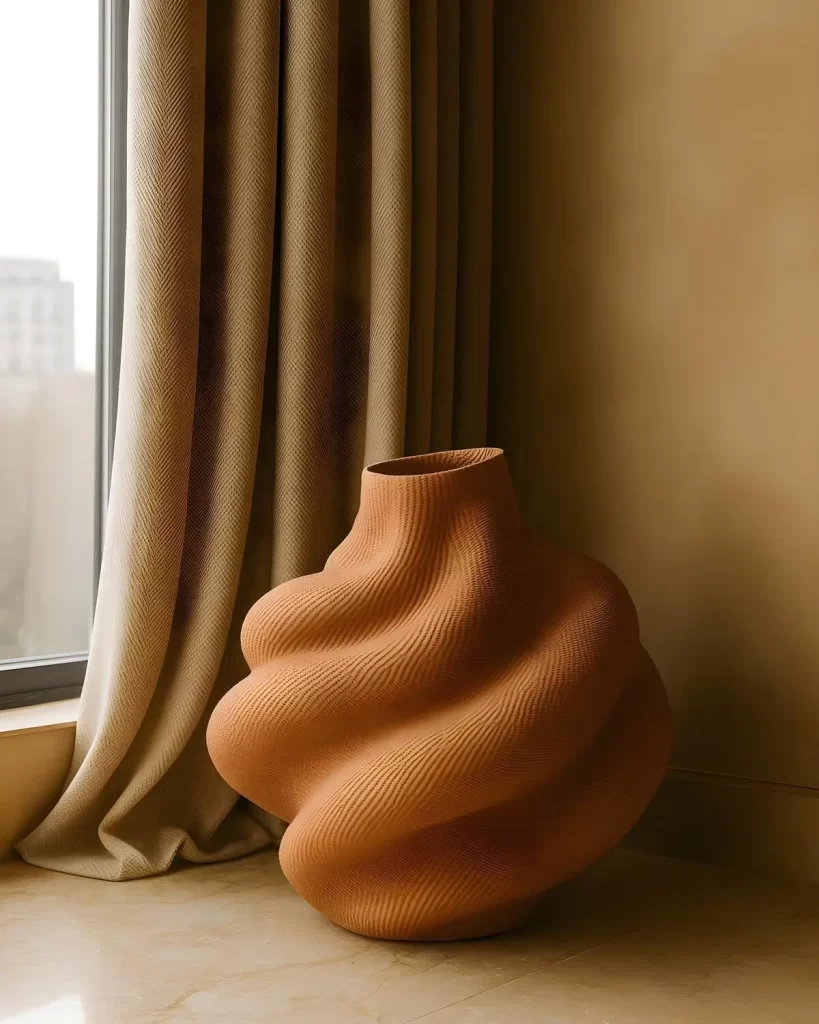
These pieces bring an energy that mass-produced baskets simply cannot replicate. Maybe it’s knowing that they were made entirely by hand. Or it’s the natural materials and organic dyes. Not to mention the connection to centuries of West African tradition.
Whatever creates that magic, it’s real and palpable. Your space feels different with a Bolga basket in it.
Beyond Baskets: Other Bolga Creations
The weavers of Bolgatanga apply their skills to more than baskets alone. Their range includes:
- Wall trays — Flat woven pieces that add dimensional art to your walls
- Bolga fans — Hand-fans woven with the same techniques and vibrant patterns
- Pet beds — Cozy, natural resting spots for cats and small dogs
Each piece carries that same commitment to craftsmanship and sustainability.
You May Also Like: The 11 Top Brands for Stunning African Wall Baskets
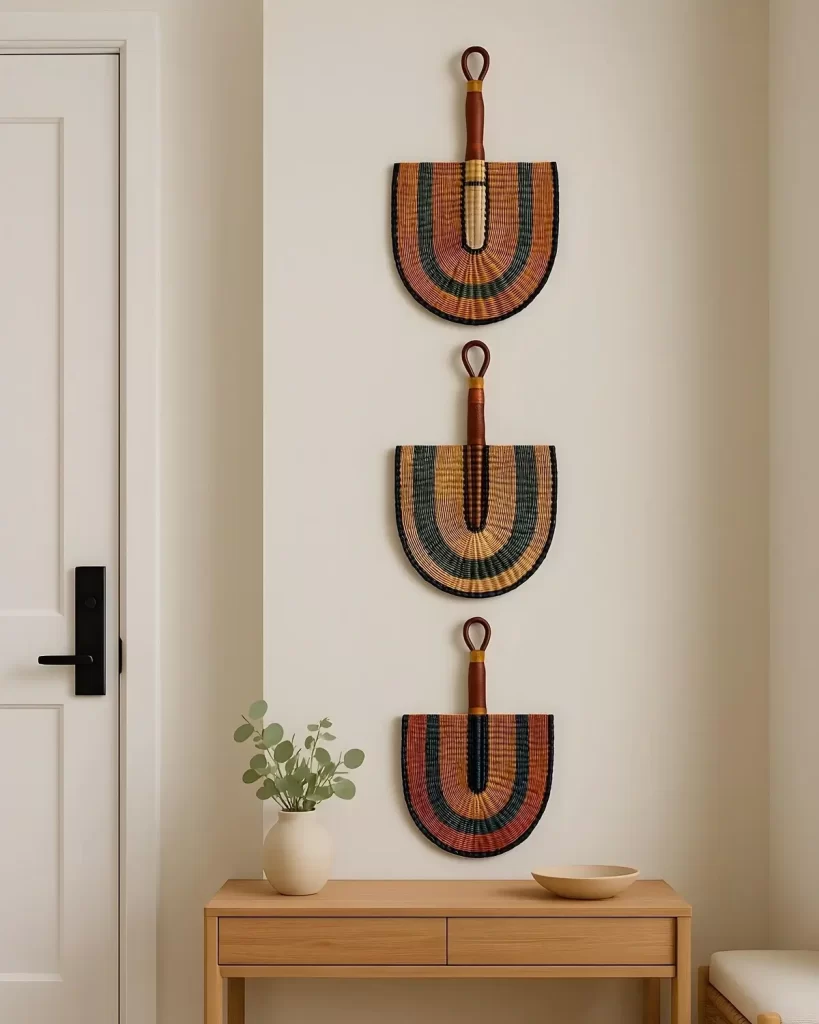
Why Bolga Baskets Matter Today
These baskets represent something increasingly rare. They’re made slowly, by hand, using renewable materials and traditional knowledge. They support artisan communities in Northern Ghana where weaving provides meaningful income.
When you choose a Bolga basket, you’re rejecting disposable culture. You’re investing in pieces that will outlast trends and serve you for decades. You’re keeping ancient skills alive for another generation.
Plus, honestly? They’re stunning. Practical storage or pure art, functional or decorative, every Bolga basket brings something special into your home.
The weavers of Bolgatanga have something to teach us about patience, sustainability, and what human hands can achieve when given time and respect. I think that’s worth celebrating.
